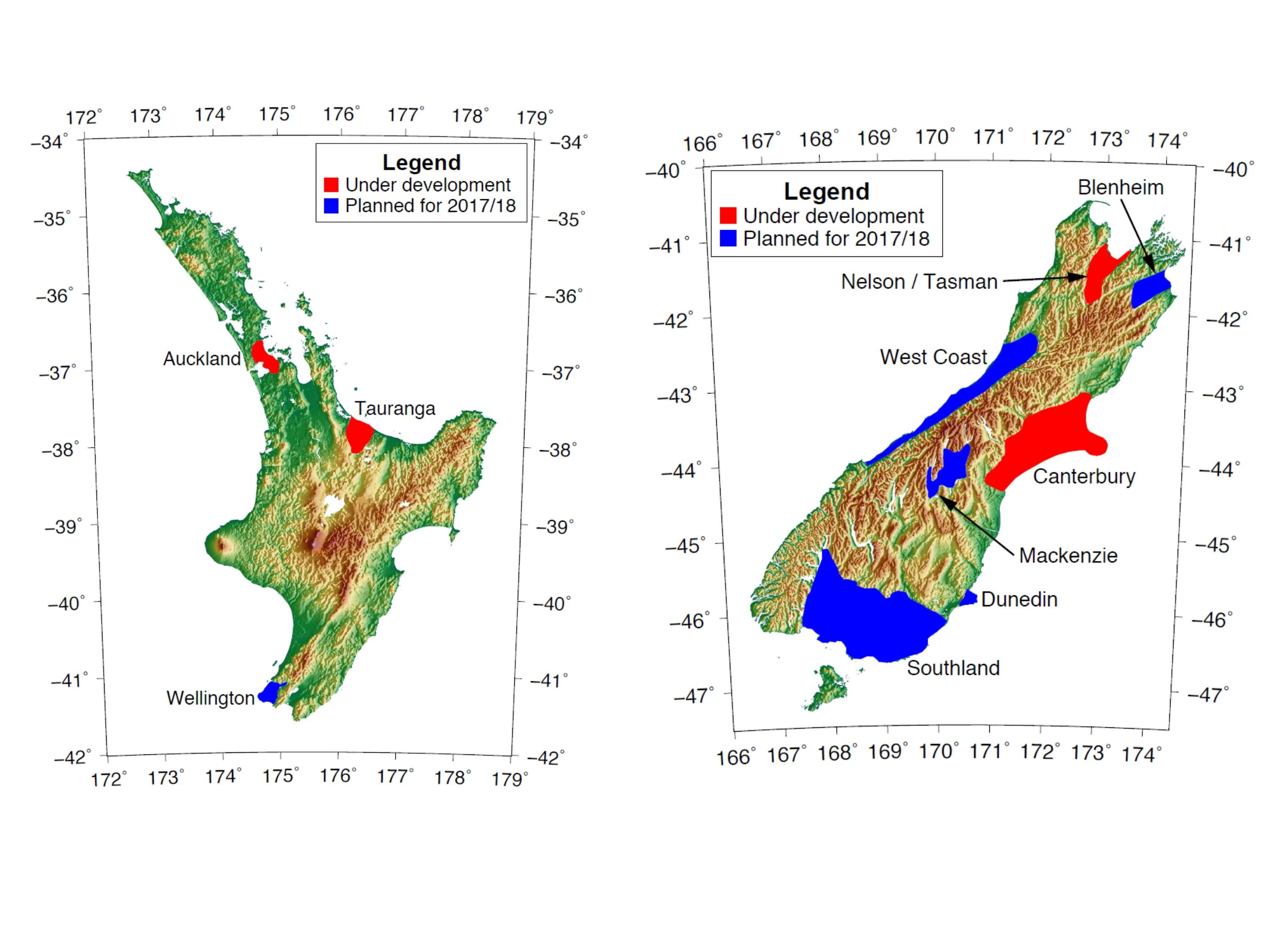Key research thrust areas
There are two key thrust areas in this Technology Platform:
- Field Testing: This thrust area focuses on streamlining the utilisation of field testing resources, the development of efficient field testing logistics and development of capability.
- Monitoring: This research thrust area focuses on the development of structural and geotechnical monitoring arrays in New Zealand and the usage of their data. This Platform will collaborate GeoNet in the development of future building instrumentation and promote/advocate for the installation of further downhole seismic arrays.
Overarching objectives
The key objectives for this platform are:
The efficient implementation of field-based research and monitoring projects.
The development of standardised field testing methodologies and testing documentation protocols and software to assist in real-time acquisition of data: A database of field testing and monitoring equipment available to QuakeCoRE researchers is available here.
The development of methodologies and software for post-processing and database management of data: Working in conjunction with TP1 and TP3 we will develop standardized workflows for data processing and analysis to improve the efficiency implementation of projects. In the geotechnical space raw site characterisation data is managed by the NZGD, therefore QuakeCoRE will focus on a higher level database of information collated from research and extracted from the NZGD.
The training of researchers in the use of equipment and application of methodologies: Training and/or collaboration with experienced researchers will ensure proper use of equipment and will develop the New Zealand knowledge base.
Development of advanced field testing capabilities to support research: Advanced field testing equipment and procedures should look to push beyond or function at the high-end of current practice. For geotechnical applications this includes: equipment and procedures for recovering undisturbed soil samples, and devices, transducers, methodologies and procedures for measuring key parameters for site characterization.
Personnel
The QuakeCore (and aligned) staff for Technology Platform 2:
Seokho Jeong, Field Research Engineer
Key performance indicators
KPI | Start Date | Due Date | Q2 Report |
|---|---|---|---|
| TP2.1: Develop framework for efficient implementation of geotechnical and geophysical field testing methodologies | 1/6/2016 | On track | |
| TP2.2: Develop and implement University of Canterbury building monitoring systems in partnership with GeoNet. | 1/6/2016 | On track | |
| TP2.3: Development of direct-push crosshole methodology and implementation (w University of Texas) | 1/6/2016 | On track | |
| TP2.4: Develop QuakeCoRE best practice guidelines and software for geophysical testing and monitoring | 1/12/2016 | On track | |
| TP2.5: Development of Instrumentation and signal processing training (with TP1) | 1/12/2016 | On track | |
| TP2.6: Develop a repository and guidelines for field testing and monitoring data and metadata archiving (with TP3) | 1/1/2017 | On track | |
| TP2.7: Development of seismically-induced ground deformations system using magnetic trackers | 1/3/2017 | Not started | |
| TP2.8: Implementation of low cost building instrumentation into GeoNet monitored buildings and assessment of performance capabilities. | 1/3/2017 | Not started | |
| TP2.9: Develop QuakeCoRE post earthquake reconnaissance strategy | 1/3/2017 | Not started | |
| TP2.10: Development of efficient tools to interact with GeoNet BIP database | 1/12/2016 | On track | |
| TP2.11: Coordinate the future structure of the GeoNet Building instrumentation programme with GeoNet representatives. | 1/12/2016 | On track |
Field Testing Projects:
A summary of current and projected regions where QuakeCoRE field testing projects are being undertaken are summarised in the figures below.
